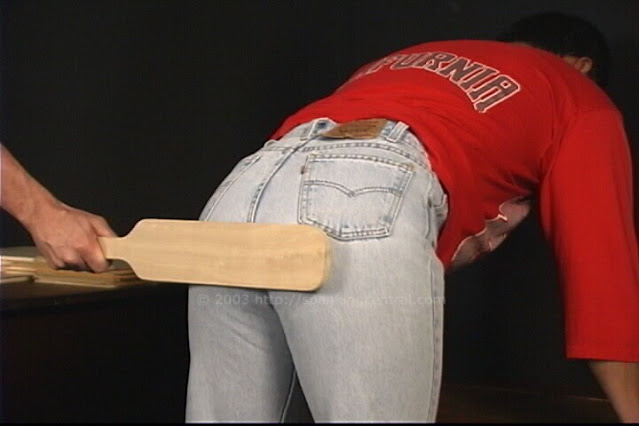Controlled CP ‘can deliver beneficial effect’
A paddling clears the air in pretty short order, but more importantly to the boys, it shows that someone cares enough about them and their behavior to be induced to spank them – John F. Schereschewsky writes in his You and Your Child column in 1960.
Controlled
Corporal Punishment Can Furnish Beneficial Effect
There has always been a considerable amount of conversation about corporal punishment and whether it should be allowed in our schools.
I’ve said many times that punishment is only one half of the discipline story, the negative side. The positive side is the kind of training that develops a conscience in the individual so that negative discipline becomes less and less necessary.
A genuinely effective program of training must, it seems to me, combine both the positive and the negative with especial emphasis on the positive side of discipline.
Nevertheless, caning, paddling, ruler slapping has been in recent months the subject of widely scattered PTA [Parent Teacher Association] discussion groups. One such group in Burke, Va. a small town just outside of Washington, D.C, appointed a committee of seven parents to make a study, a report, and recommendations on this topic.
This study group took their job seriously indeed, spent several months getting reports and opinions from many different places, and literally hundreds of different individuals. When they put their findings together to come up with recommendations, it turned out that all seven of the seven member committee approved: 1) that reasonable corporal punishment be administered at school, 2) the persons whom they queried, mostly parents and principals of schools in other towns of other states, were overwhelmingly in favor of corporal punishment, 3) it approved ana admitted to the system, corporal punishment should have certain definite restrictions attached: a) there should always be a witness, b) no punishment administered in anger.
Of course we all know that it is a small percentage of students, probably one out of twenty or fewer, who refuse to learn through the top side. Then again, a youngster often enough, and oddly enough, is glad to get a short, not too severe spanking or paddling for several reasons. If he’s done something wrong, a spanking or paddling clears the air in pretty short order, but more importantly to them, it shows that someone cares enough about them and their behavior to be induced to spank them. This is an odd sort of security-seeking, but it is quite common nevertheless.
The fact is almost always brought up in any discussion such as this that students in the English schools are regularly caned when they deserve it, not only by individual instructors, ' and the headmaster, but also by senior dormitory monitors.
Regular Equipment
Special canes for this purpose are listed in the school equipment catalogues along with chalk, backboard erasers, maps, and other paraphernalia of instruction. I have never met anyone yet who has gone to school under this caning attitude who has not approved it and in most cases has been grateful for it. One American boy who went to what we would call prep school in England told me that he had been caned perhaps five or six times during the fall term, three or four times during the winter term, and only once in the spring term. But this, he told me, was much more often than any of the English students.
I used the phrase “when he deserved it” and this apparently is the reason for so many persons approving the practice in England: Everyone seemed to agree that he was never caned unless he did deserve it and that he was almost always caned when he transgressed. If we could be sure that this atmosphere would prevail. I think I would be in favor of it, if we did not lose sight of our more important goal of positive discipline.
As published in the Hartford Courant, Hartford, Connecticut, United
States, 5 July 1960.
Picture credit: Spanking Central.








Hey that's my bubble butt your using on your blog thanks 👍 my name is Vincent Noriega from Fresno I modeled in Vincent's disruptive behavior video on spankingcentral.com in 2003 are there any modeling jobs available
ReplyDeleteI still got my big bubble butt cheeks that need a good spanking
ReplyDeleteI'll do that for you if you like. Cane or slipper?
ReplyDelete